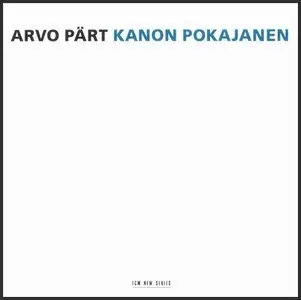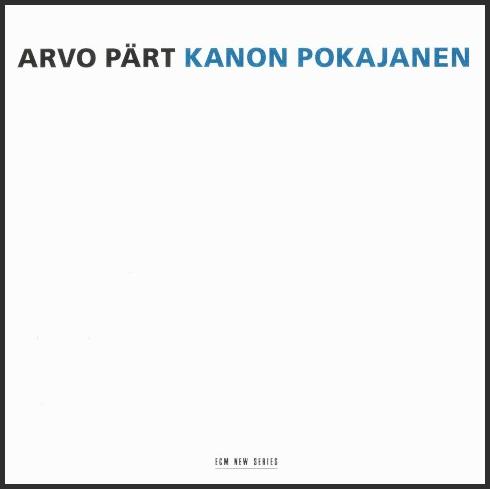Arvo Pärt - Kanon Pokajanen
Classical | Label: ECM | FLAC (tracks), scans | 2 CD Set | PT: 42:44 + 40:30 | release: 1998 | 2 x 97 + 60 MB
Classical | Label: ECM | FLAC (tracks), scans | 2 CD Set | PT: 42:44 + 40:30 | release: 1998 | 2 x 97 + 60 MB
Arvo Pärt: Kanon Pokajanen
ECM New Series 1654/55 (457 834-2 European Edition)
Recorded at the Niguliste Church, Tallinn, Estonia in June 1997. Released in 1998.
Tonmeister: Teije van Geest; Producer: Manfred Eicher.
Composers: Arvo Pärt
Conductors: Tonu Kaljuste
Performers: Estonian Philharmonic Chamber Choir (Chorus)
All compositions by Arvo Pärt (1935-)
Tracks 1.-11. Kanon Pokajanen (1997) for soloists & mixed choir (83:18)
Kaia Urb:soprano; Ave Moor:alto; Tiit Kogerman:tenor; Estonian Philharmonic Chamber Choir / Tõnu Kaljuste
Kanon Pokajanen was commissioned by KölnMusik GmbH for the 750th anniversary celebration of Cologne Cathedral in 1998 and is dedicated to Tõnu Kaljuste and the Estonian Philharmonic Chamber Choir.
The “Canon of Repentance” (Kanon Pokajanen) by Arvo Pärt utilizes a prayer book text in use since the earliest times in the Russian church. By using this text, Pärt’s composition connects itself to the tradition of the canon (Greek ‘rule, law’), a specific kind of ecclesiastical literature. The Eastern Church knows a large number of canons, each of which serves different purposes. The Canon of Repentance is one of them. The tradition of the canon began in Byzantium and blossomed in the 7th and 8th centuries through the works of St. Andrew of Create, St. John of Damascus and St. Cosmas the Great.
Arvo Pärt’s Kanon Pokajanen is one may differentiate several points between the traditional canon form, with all its strict structural features, and this particular setting of a Canon by Arvo Pärt:
- Arvo Pärt conceived his Kanon Pokajanen as a through-composed work in which the canon’s dialog character is clearly expressed through musical means.
- In terms of artistic organization, Pärt has juxtaposed the hiermos and troparia in stark musical contract. This contract is less apparent today in the Russian church’s common practice, in which the dialog form is expressed only through singing (hiermos) and reading (troparia).
- In this freely composed work, Arvo Pärt does not use any specific church tone. (Orthodox singers)
…The canon is a song of change and transformation. In the symbolism of the church, it inokes the border between day and night, Old and New Testament, old Adam and new Adam (Christ), prophecy and fulfilment, the here and the hereafter. Applied to a person, it recalls the border between human and divine, weakness and strength, suffering and salvation, mortality and immortality. The symbolic reference to borders is especially powerful what the canon is sung in church. We may picture it as follows: The canon is heard in the nave, barely illuminated by the flickering candles, while the door to the sanctuary still remains closed. As soon as the canon has come to an end, this entrance, the "door to paradise" or the "royal door", as it is called, opens. The church is filled with light, signifying the presence of Christ. (musicolog.com)
This is an exquisite recording for all those who like Arvo Pärt's compositions.
Tracklist:
Disc 1
1. Ode I
2. Ode III
3. Ode IV
4. Ode V
5. Ode VI
Disc 2
1. Kondakion
2. Ikos
3. Ode VII
4. Ode VIII
5. Ode IX
6. Prayer After The Canon



